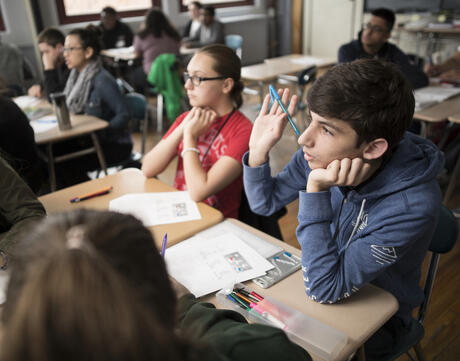
Understanding Social Systems as an Element of Setting
At a Glance
Language
English — USSubject
- English & Language Arts
Grade
6–12- Culture & Identity
Overview
About This Learning Experience
It is a human tendency to form ourselves into groups. In groups, we meet our most basic needs; we share culture, values, beliefs, and interests; and we satisfy our desire to belong. Some groups overlap, and others come into conflict with one another. Since each one of us is often a member of more than one group, these conflicts can force us to confront difficult choices and dilemmas, especially when the groups to which we belong have a different sense of the common good.
This complex network of intergroup relationships is just one aspect of the social systems that make up our larger society. Each social system is composed of individuals, groups, and institutions. Within each system, everyone has a role to play, which is determined by the expectations society places on that role. The situation can be complicated, since there are often multiple systems operating at the same time: one may give a person a sense of agency in some areas, while another may mean that same person feels powerless elsewhere. Literature can help us to engage with this complexity when we examine how characters understand, interact with, and feel about the social systems they must navigate in the world of the text.
The following learning experiences help students to analyze social systems as an element of setting and to consider the ways in which individuals may think, feel, and care differently about issues, choices, and actions based on their identity and relationship to these systems, both in literature and in life.
Preparing to Teach
A Note to Teachers
Before using this learning experience, please review the following information to help guide your preparation process.
Procedure
Activities
Materials and Downloads
Quick Downloads
Unlimited Access to Learning. More Added Every Month.
Facing History & Ourselves is designed for educators who want to help students explore identity, think critically, grow emotionally, act ethically, and participate in civic life. It’s hard work, so we’ve developed some go-to professional learning opportunities to help you along the way.
Exploring ELA Text Selection with Julia Torres
On-Demand

Working for Justice, Equity and Civic Agency in Our Schools: A Conversation with Clint Smith
On-Demand

Centering Student Voices to Build Community and Agency
On-Demand













